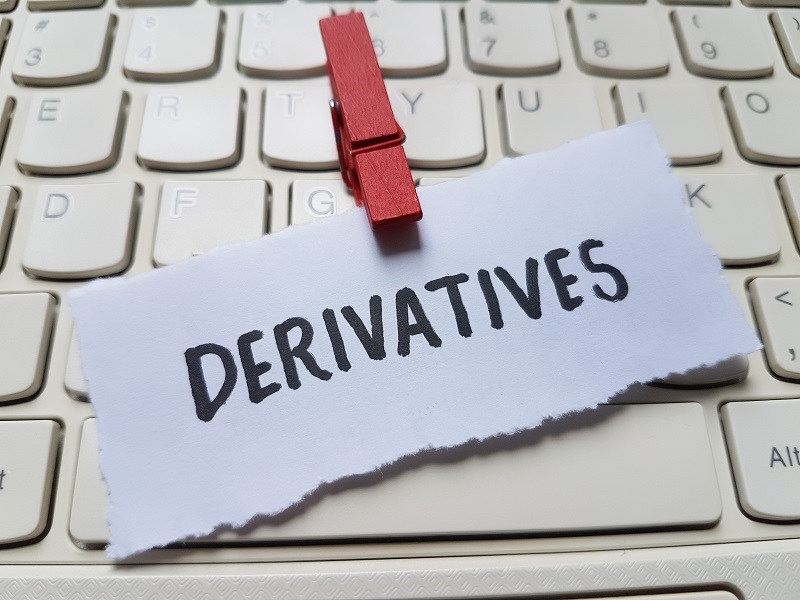
If you’ve ever puzzled about what derivatives are in finance, you’re no longer on my own. For many novices, the term “derivatives” sounds complex, risky, or only relevant to professional traders. But the fact is, derivatives are an important part of modern monetary markets. Whether you are handling non-public investments, shielding in opposition to dangers, or exploring advanced techniques, understanding derivatives is vital.
In this newbie-pleasant manual, we’ll discover what derivatives are in finance, discuss key styles of derivatives defined, damage down alternatives vs futures fundamentals, and give an explanation for the role of derivatives for risk management control. We'll additionally touch on the chance of derivative buying and selling—so you walk away informed, not intimidated.
At its center, a spinoff is an economic contract whose cost is derived from an underlying asset. That underlying asset will be a stock, bond, commodity, forex, interest fee, or even a market index.
In simple phrases, derivatives are contracts among or extra parties, wherein the agreement’s price is based on the rate of something else.
So, when someone asks what derivatives are in finance, the answer is: They are instruments used to manipulate, speculate, or hedge exposure to the actions of real property without necessarily owning it.
There are numerous forms of derivatives; however, the 4 maximum common are:
Let’s take a look at each of these types of derivatives defined in easy language.
A futures contract is a settlement to buy or sell an asset at a predetermined destination date and fee. Futures are standardized and traded on exchanges.
Options provide the customer the proper, but no longer the responsibility, to shop for or promote an asset at a specific rate earlier than a specific date.
We’ll cross deeper into alternatives vs futures basics rapidly.
Swaps are non-public contracts between parties to exchange future cash flows. The most commonplace is a hobby rate switch.
These are similar to futures; however, they are traded over the counter (OTC), meaning they’re customized and not standardized or exchange-traded.
The derivatives offer you a solid base for deeper knowledge and practical utility.
When it comes to alternatives vs futures basics, each is are crucial derivative device, but they serve unique purposes and come with awesome features.
Options:
Risk Level:
Futures:
Options are usually considered more bendy and are a favorite tool for retail investors. Futures are regularly used by institutions and expert investors because of their leverage and excessive quantity.
If you’re starting, learning alternatives vs futures basics will help you understand a way to change or hedge effectively without taking needless dangers.

Risk management is one of the great uses of derivatives. Derivatives are utilized by groups and customers as a hedge against changes in interest rates, foreign exchange rates, and rate volatility.
Derivatives for risk management are an essential element of financial planning for individuals and corporations due to their capacity to protect against destiny uncertainty.
When used responsibly, derivatives act like monetary coverage, supplying peace of mind in unstable environments.
Although derivatives have many benefits, there are significant hazards involved, particularly for buyers who are too leveraged or lack information.
Prior to engaging in spinoff purchasing and promoting, it is important to recognize the risks involved. Even pro investors might lose lots of money if they don't have the right information and approach.
Let's understand what derivatives are by the real-time users.
Grasping these real-time examples gives more information about the derivatives.
Here are some simple steps to learn about and make responsible investments if you're just starting to learn about derivatives in finance.
To understand what derivatives are in finance, it’s critical to check records. Derivatives played a chief role in the course of the 2008 financial disaster—mainly mortgage-backed securities and credit default swaps.
These complex derivatives were poorly understood and poorly regulated, main to huge systemic risks. This instance serves as a powerful reminder of the danger of derivative buying and selling, especially whilst oversight and transparency are missing.
So, what are derivatives in finance? They are not as mysterious or dangerous as they will seem—if used efficiently. They’re monetary contracts tied to an underlying asset, and they can be used to hedge, make investments, or speculate.
By expertise the types of derivatives defined, understanding the alternatives vs futures fundamentals, being privy to the threat of spinoff trading, and the use of derivatives for risk management, you could adequately discover one of the maximum dynamic gears in finance.
Whether you're handling a corporate portfolio or a personal one, derivatives offer each energy and responsibility. Learn the basics, manage your chance, and use derivatives as a tool—now not a big gamble.
This content was created by AI